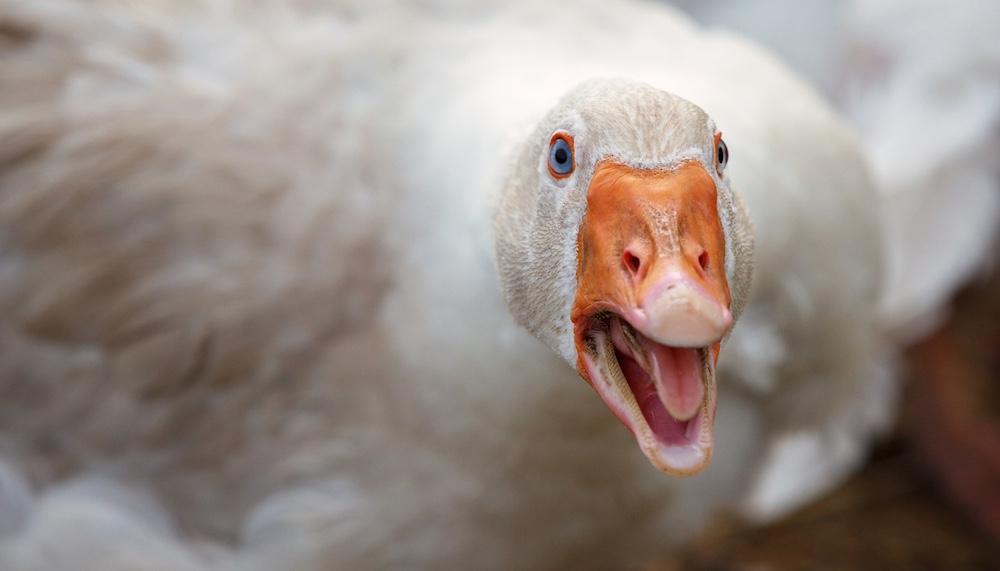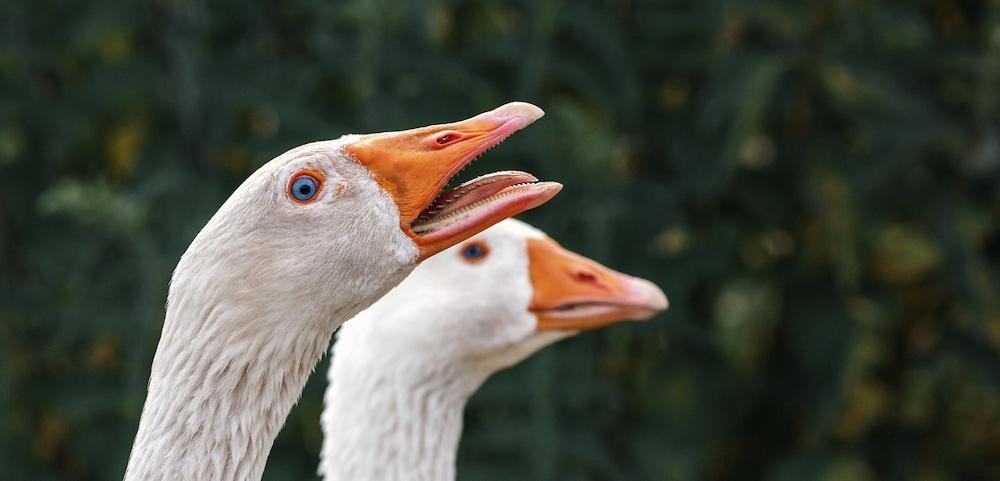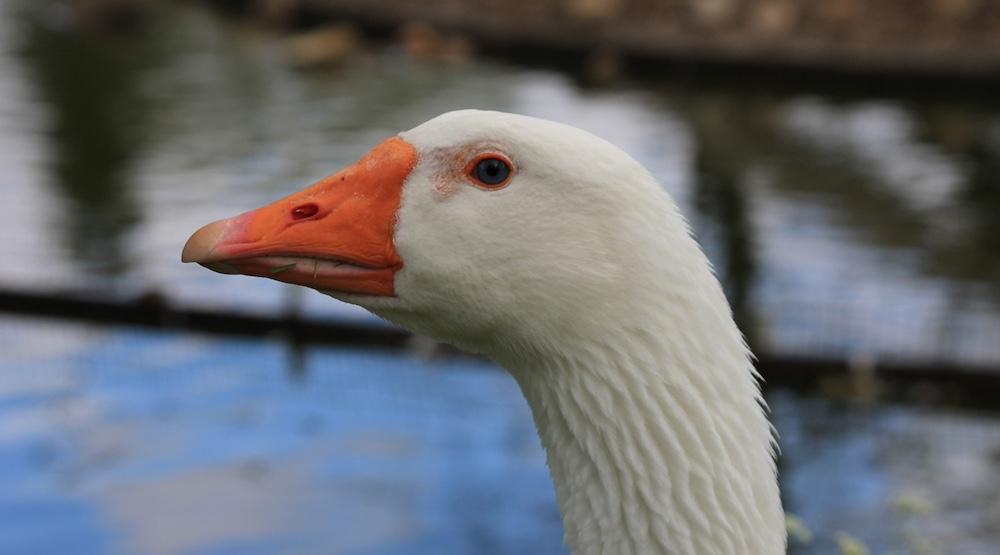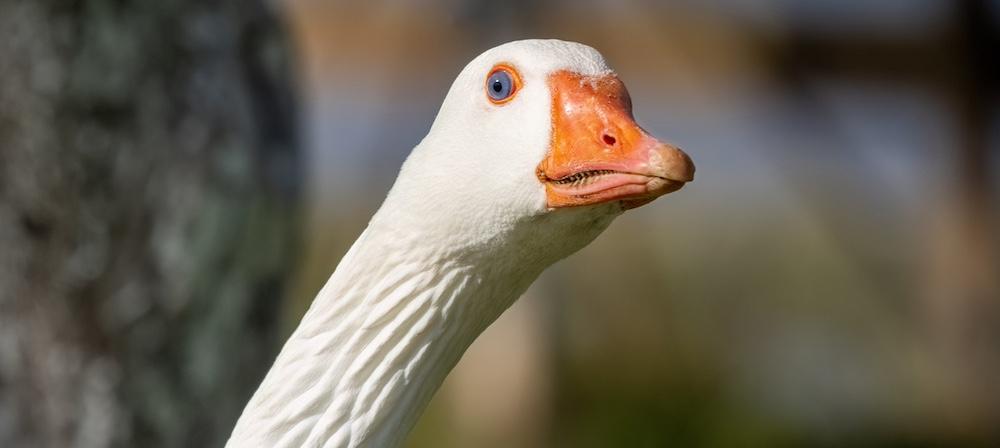What's Going on in Geese's Mouths? Do They Have Teeth? An Investigation
Published Jan. 8 2024, 11:03 a.m. ET

One noticeable characteristic of geese and birds in general is their beaks. Brightly colored against the rest of their face, these aspects of their mouths help them catch food, break things, carry objects, and more. But there's more to these animals than you may realize.
If you ever get the chance to look into a goose's mouth, you may notice rows of what looks like teeth. But do geese have teeth or is something else going on? Geese, like swans, have a reputation for hissing and snapping at humans, but could they actually bite you? Here's what you need to know about goose anatomy, explained.

Do geese have teeth?
No, geese do not have teeth. No modern birds do. According to Britannica, fossils show that their ancestors, dinosaurs, did have teeth, but thanks to evolution, they have disappeared over the years.
When you look at a bird's mouth, you might see something that resembles sharp teeth along the inside of their beak and the edges of their tongue. These are actually called tomia, which, like teeth, are a type of bone that geese use to eat.
Crazy Creatures states that tomia are made of cartilage, while teeth are made of enamel.

Because cartilage is softer, like the bones in your ears or nose, they aren't as strong as teeth. That doesn't mean the prongs in a goose's mouth aren't dangerous. Tomia can be sharp and harmful if a goose sees you as a threat; they may choose to attack you. Crazy Creatures says geese are known to be quite aggressive if they feel threatened.
Do geese kill snakes?
It's possible that a goose can kill a snake. If a snake were to wander into a goose's territory in a way they find threatening, a goose may feel the need to attack. However, Birds & Wetlands points out that these birds don't actively hunt these reptiles.
Additionally, before geese attack, they may honk loudly. The Iowa Department of Natural Resources says that this can be a way to scare predators off or as a warning. Geese can be especially dangerous if they feel like their babies are threatened.

Do geese fly at night?
Stefan Pociask, a wildlife researcher, posted on Quora that these birds do fly at night. Canadian geese fly at night for a few key reasons. For one, the nighttime air provides them with thermals or air currents that are created when the Earth's surface is warmer, according to the National Weather Service. Geese glide along the thermals, and it helps them gain altitude without constantly flapping their wings.
Secondly, the temperature at night is typically cooler than during the day so it helps prevent geese from overheating as they fly. All that flapping can be tiring for them especially when you consider how many miles birds can fly. The Iowa Department of Natural Resources points out that on average, Canadian geese can fly 1,500 miles a day.

Pociask also said that safety is a factor in goose flight patterns. Birds that typically attack geese, such as hawks and falcons, only hunt during the day, so flying at night is safer. So by flying at night, they can travel without worrying as much.
To be clear, geese can and do fly during the day. Geese primarily travel during the day to find food and large bodies of water in which to rest.